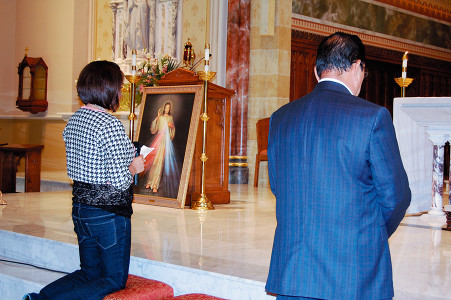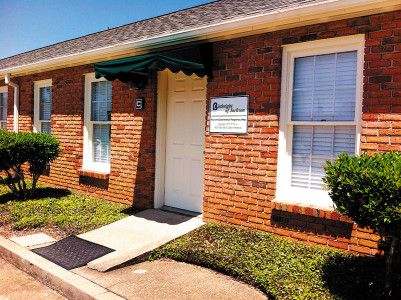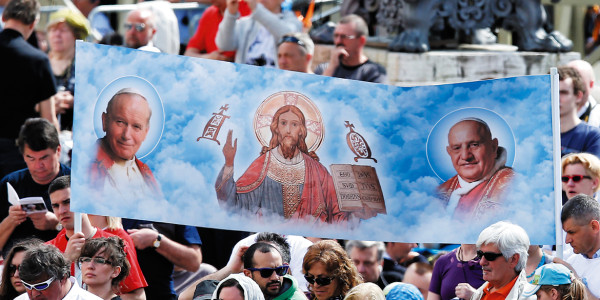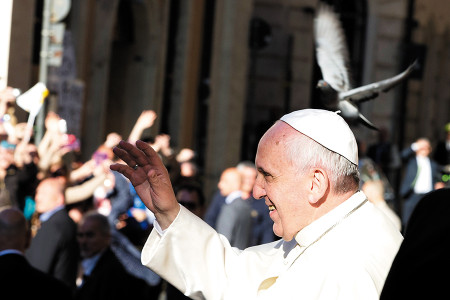Por Obispo Joseph Kopacz
¿Por qué estás buscando entre los muertos al que vive?, es la pregunta que le hizo el ángel a María Magdalena en la tumba del Señor crucificado dos días después de su aplastante muerte. María y los otros estaban simplemente atendiendo a las tradicionales costumbres funerarias con respecto al cuerpo de Jesús, pero lo que descubrieron fue el poder de Dios que había rodado la piedra y lo había liberado de la comprensión de la muerte.
La indescriptible muerte de su Señor en la cruz fue superada por su inimaginable resurrección de entre los muertos. El Dios vivo ya estaba sembrando las semillas de la sanación y la esperanza en sus corazones para superar la agonía de la crucifixión. Pero ¿cómo alguien puede clasificar tales extremos?
Nadie entre los judíos que estaban esperando al Mesías, incluyendo a los discipulos del Señor, estaba preparado para su forma de morir. Murió como un inútil esclavo con criminales colgados a ambos lados. En la mañana del Domingo de Resurrección, el evangelio proclama el primer paso de ellos en su camino de fe con el sepulcro vacío. Esto no es prueba de que Jesús resucitó de entre los muertos, pero de manera paradójica la piedra retirada de la entrada mostrando sólo la ropa del entierro, manifiesta un nuevo mundo en movimiento.
Los discípulos sabían que no habían venido durante la noche a robar su cuerpo, una historia que había circulado durante años que es atribuida a San Mateo después del entierro de Jesús. Entonces, ¿dónde está el cuerpo?
La iglesia responde a esta inflexible pregunta durante la Octava de Pascua, la brillante semana de fe y esperanza, desde el Domingo de Pascua hasta el segundo domingo de Pascua. Las oraciones litúrgicas de la misa de cada día de la semana durante la Octava celebran el Domingo de Resurrección. Las lecturas diarias del evangelio proclaman las apariciones del Señor a sus discípulos que se encuentran en Mateo, Marcos, Lucas y Juan. En estas narraciones Jesús dirige su confusión y desorientación y, aún más, el dolor en sus corazones. Él se revela a sí mismo en su cuerpo glorificado, resucitado de entre los muertos, el camino a la vida eterna. No es el cuerpo que él una vez había tenido, un cuerpo como el de todos los demás que conoce las limitaciones del tiempo y el espacio. Sin embargo, es porque el puede comer y puede ser tocado. ¡Sorprendente!
En el evangelio de san Lucas, Jesús aparece y calma los temores de sus discípulos que creían que estaban viendo un espíritu, al dirigir sus miradas a las marcas de los clavos en las manos y el costado. Aún más, les pide un poco de su pescado cocido, el cual toma y come.
Jesús también come en su apariencia de resurrección en el evangelio de Juan en el lago de Tiberias donde había estado esperando a sus discípulos que habían salido a pescar. Los discípulos también podían tocarlo físicamente.
Recuerden en otra narración de la resurrección en el evangelio de Juan la cual dice que Tomás no estaba presente cuando Jesús se le apareció a los aterrorizados apóstoles que estaban escondidos detrás de puertas cerradas. Tomás estaba presente en la segunda visita del Señor y en esa visita Jesús lo invitó a poner sus dedos en la marca del clavo y a poner su mano en el agujero de la lanza en el costado. Así pues, Jesús es identificable, puede comer, puede ser tocado. Sin embargo, no está limitado por el tiempo y el espacio. Esto es claramente algo para ser reconocido.
Por nuestra fe en el Señor resucitado, creemos que la vida es más fuerte que la muerte, que el amor vence al temor, que la esperanza disipa las tinieblas, que la valentía conquista la impotencia, y que el perdón reconcilia al pecado y la división. Creemos en esto no porque Jesús venció la muerte y camina entre las sombras, o camina incluso entre los vivos como conocemos la vida. Él ya vive en la gloria en el seno de la Divina Trinidad y a través de la fe, la esperanza y el amor, ya estamos unidos a él como su cuerpo en la tierra. Él ha puesto la constante sensación de eternidad en nuestros corazones a través del Espíritu Santo que es el anticipo del banquete celestial.
Como le escribió San Pablo a los cristianos de Roma, somos herederos de la promesa y hemos recibido el primer pago de este don eterno. Esta es la alegría del evangelio, que es eminentemente personal, pero no un don privado, un legado a la iglesia a ser vivido en cada generación, como el cuerpo de Cristo en este mundo.
Uno de los temas dominantes de las apariciones de la resurrección es el saludo de paz del Señor a sus discípulos a superar su temor, su duda, pena, ira, decepción etc. Ellos representan la desunión de nuestra historia humana, pero la paz de Cristo, el Shalom de Dios, es fuerte para siempre.
Esta es la paz que el Señor nos asegura que el mundo no puede dar, no puede quitar. No se trata de una paz que sólo calma nuestros nervios o elimina nuestra culpa, sino un poder que nos impulsa a nuestra vida cotidiana, sean cuales fueren las circunstancias, a vivir como discípulos del Señor. “Como el Padre me ha enviado, yo os envío”. Luego sopló sobre ellos y les dijo, reciban al Espíritu Santo.
¿Dónde está el cuerpo del Señor? El está presente en nuestra vida, en la iglesia y en el mundo. Qué podamos ver con más claridad a través de los ojos de la fe y saber que el amanecer desde lo alto se rompe sobre nosotros cada día para brillar en nosotros, que vivimos en la oscuridad y en la sombra de la muerte para guiar nuestros pies en el camino a la paz. ¡Feliz Pascua!




